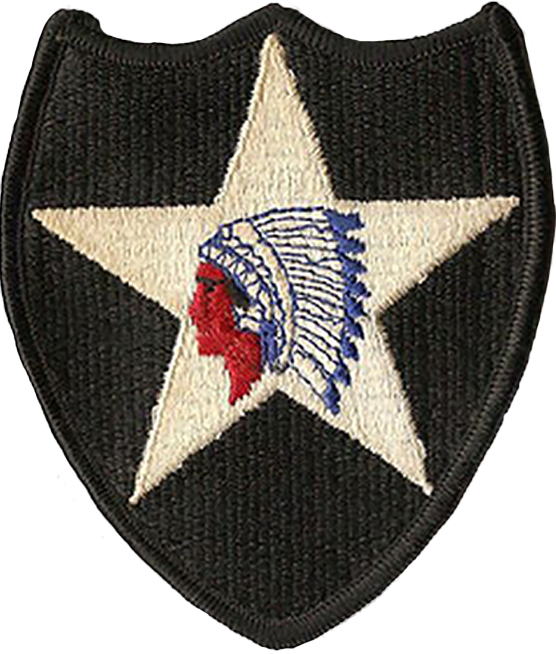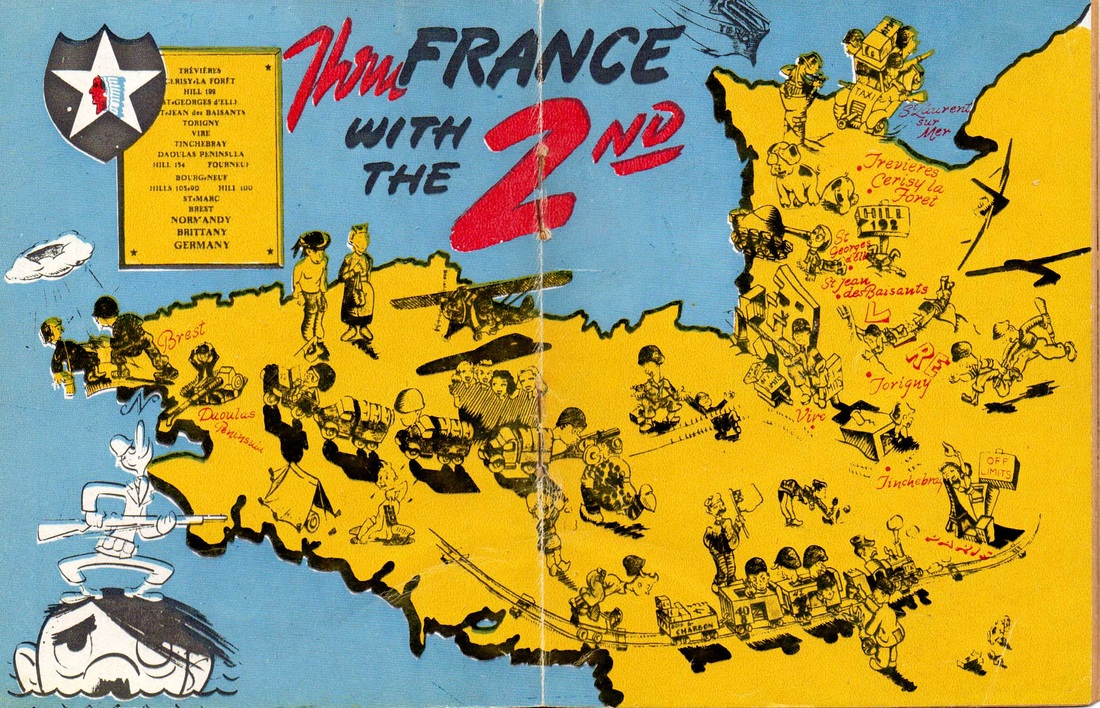PVT Carl O'dell Stephens
2nd Infantry Division 23rd Infantry Regiment Indianhead
PVT Carl O'dell Stephens
2nd Infantry Division
23rd Infantry Regiment Indianhead
“Honor your father and your mother, that your days may be long in the land that the Lord your God is giving you.
Exodus 20:12



2nd Infantry Division
After training in Northern Ireland and Wales from October 1943 to June 1944, the 2nd Infantry Division crossed the channel to land on Omaha Beach on D plus 1 (7 June 1944) near Saint-Laurent-sur-Mer. Attacking across the Aure River on 10 June, the division liberated Trévières and proceeded to assault and secure Hill 192, a key enemy strong point on the road to Saint-Lo. After three weeks of fortifying the position and by order of Commanding General Walter M. Robertson, the order was given to take Hill 192. On 11 July under the command of Col.Ralph Wise Zwicker the 38th Infantry Regiment and with the 9th and the 23rd by his side the battle began at 5:45am. Using an artillery concept from World War I (rolling barrage) and with the support of 25,000 rounds of HE/WP that were fired by 8 artillery battalions, the hill was taken. Except for three days during the Battle of the Bulge, this was the heaviest expenditure of ammunition by the 38th Field Artillery Battalion; And was the only time during the 11 months of combat that 2nd Division artillery used a rolling barrage. The division went on the defensive until 26 July. After exploiting the Saint-Lo breakout, the 2nd Division then advanced across the Vire to take Tinchebray on 15 August 1944. The division then raced toward Brest, the heavily defended port fortress which happened to be a major port for German U-boats. After 39 days of fighting the Battle for Brest was won, and was the first place the Army Air Forces used bunker busting bombs.[citation needed]
The division took a brief rest 19–26 September before moving to defensive positions at St. Vith, Belgium on 29 September 1944. The division entered Germany on 3 October 1944, and was ordered, on 11 December 1944, to attack and seize the Roer River dams. The German Ardennes offensive in mid-December forced the division to withdraw to defensive positions near Elsenborn Ridge, where the German drive was halted. In February 1945 the division attacked, recapturing lost ground, and seized Gemund, 4 March. Reaching the Rhine on 9 March, the division advanced south to take Breisig, 10–11 March, and to guard the Remagen bridge, 12–20 March.
The division crossed the Rhine on 21 March and advanced to Hadamar and Limburg an der Lahn, relieving elements of the 9th Armored Division, 28 March. Advancing rapidly in the wake of the 9th Armored, the 2nd Infantry Division crossed the Weser at Veckerhagen, 6–7 April, captured Göttingen 8 April, established a bridgehead across the Saale, 14 April, seizing Merseburg on 15 April. On 18 April the division took Leipzig, mopped up in the area, and outposted the Mulde River; elements which had crossed the river were withdrawn 24 April. Relieved on the Mulde, the 2nd moved 200 miles, 1–3 May, to positions along the German-Czech border near Schönsee and Waldmünchen, where 2 ID relieved the 97th and 99th ID's. The division crossed over to Czechoslovakia on 4 May 1945, and attacked in the general direction of Pilsen, attacking that city on VE Day. The division lost 3,031 killed in action, 12,785 wounded in action, and 457 died of wounds.
2nd Infantry Division returned to the New York Port of Embarkation on 20 July 1945, and arrived at Camp Swift at Bastrop, Texas on 22 July 1945.
Hazel G Stephens Gay Nell Stephens Ed Stephens Lucille Farmer
Carl Stephens Sadie Margaret Stephens Doris Mitchell
James Madison Stephens Joe David Stephens James Wilbur Stepens
Mary Saleta Clark Stephens Lois Stephens Vela






I checked the records of your Grandfather, Mr. Carl Odell Stephens. As you wrote, your Grandfather was a member of Company B, 1st Battalion (not the 11th Battalion), 23rd Infantry Regiment, 2nd Infantry Division. As you probably know, he joined the Army on February 19, 1944 at Fort McClellan, Alabama. After that he took his 17 weeks of basic training so I think that he did not join the 2nd Infantry Division until August 1944. It corresponds to his medals, specifically the "European–African–Middle Eastern Campaign Medal" where your Grandfather has three small bronze stars, that means he fought in three campaign: Northern France - Battle for Brest (since his arrival in July/August to September 14, 1944); Rhineland - Siegfried Line (September 15, 1944 - December 15, 1944 and Ardennes - Battle of the Bulge (December 16, 1944 till his admission in hospital). Now about his participation in the Battle of the Bulge. Because he was a member of Company B, 23rd Infantry Regiment I can tell you some information. During the German attack on December 17, 1944, his battalion was surrounded by the enemy near the villages of Hünningen and Mürringen. Your Grandfather and his friends in Company B were able to throw back six attacks of the 12th SS Panzer Division "Hitlerjugend" but the seventh one was critical. I am sending to you some articles about these fights. After a horrific hand-to-hand combat with the enemy, your Grandfather was most likely trapped behind enemy lines and he was forced to find his way back to American lines. I can imagine that he was without supply, ammunition and maybe even without weapon and he just crawled back to find Americans. The whole 1st Battalion tried to fall back and fortunately, they were successful but some of its members were by mistake left behind and had to find their way back on their own. That was most likely the case of your Grandfather. I attached his Hospital Admission Card where is mentioned that he was admissed with dysentery so maybe he drunk polluted water as he tried to escape the captivity. The discharge date is incorrect on the card because he was honorably discharged in July 1945 and as you wrote after December 1944 he most likely did not re-united with his Company and terribly exhausted, he was treated for several months. In any case, he experienced horrors that none of us can imagine, and the moment he ran away from the captivity by SS members after heroic defensive action, he must have been terribly frightened. God bless him!! He was a true hero and you can be really proud of him!! If you have any additional questions, please, feel free to ask me. I am happy to help you.
Have a great day! Tomas Hataj
23rd Infantry Site Information
World War Regimental Histories
Facebook Video - 2nd ID Battle for Brest
Thank you All4USA / Military Best for Contributions




© Copyright by Sharlene Stephens 2020
Route1Fyffe.com is a personal family owned site. This site is All Rights Reserved. The copyright and other intellectual property rights in all material and content on this site including photographs, historical information and graphical images and the organization and layout of the site is owned by Sharlene Stephens. Some information and images shared are resourced from internet and for research purposes only. All wording and content including graphics and images are not for reproduction or use.





